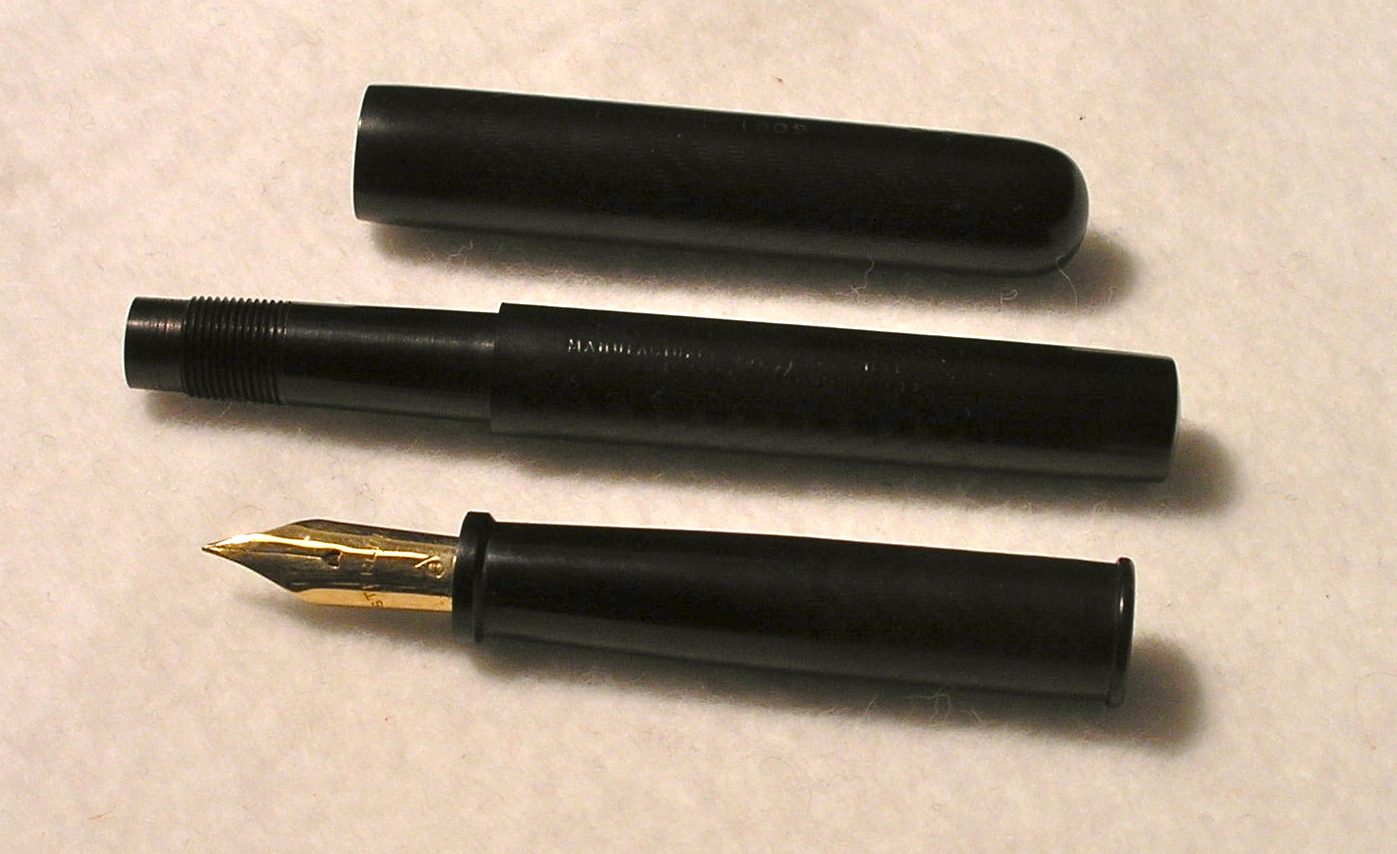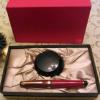This post is about a Sterling middle joint eyedropper and an interesting eyedropper FP filling machine.
Before I begin, let me recommend Richard Binder's article on Eyedroppers: Here's Mud in Your Eye (dropper). It gives an excellent overview of the eyedropper filling system and it's variations.
Some time ago I purchased my first (and only) middle- joint eyedropper. It was a Sterling FP.
A brief background on eyedroppers: The earliest FP were eyedroppers. They could contain huge ink capacities, had no sacs and no self-filling mechanisms that could deteriorate or break down. But ...they had a few drawbacks:
- One needed an eyedropper to carry around in order to fill them
- Leaking frequently occured from the joint (where the section screwed into the barrel)
- The filling procedure was awkward and sometimes messy
In order to solve the second drawback a few variants of ED were designed: the middle-joint, the end-joint and the joint-less.
Here's a picture of a standart eyedropper (for reference) - it's an early 1900 MHR Laughlin (Michigan, Detroit). One can see that the joint between the barrel and section is positioned near the place the FP is held:

In middle-joints ED the joint is located at the middle of the pen, a point where the ink has to "travel" high (in opposite direction to gravity), so the chances are good for keeping one fingers clean.
A.A. Waterman patented a middle-joint on Feb. 14 1899 as part of the 619,702 patent . Here's the drawing from the patent where one can clearly see that the threads are located at the middle of the barrel:

Here are some pics of the Sterling middle joint FP.
Capped:

Disassembled FP - here we can see the high positioned joint, due to the long "neck" of the section.

Barrel imprint includes the patent date: "PAT. FEB.14.1899" (under the "Sterling Pen Company"). That's exactly the same date as in the A.A. Waterman patent (see above). It seems the companies shared this patent, or had some other agreement allowing the Sterling Pen co. to use the A.A. Waterman's middle joint patent:

And a picture of the no. 5 nib:

I've also found on the net an Sterling FP ad stressing the advantages of the middle joint - cleanest FP. In the ad the no. 5 size (named Falcon) cost was 4$:

And now to the filling device- While searching the net for info. on the Davidson Rubber Co. I've found a patent for an eyedropper FP filling device invented by Rhodes G. Lockwood (the owner of the Davidson Rubber Co.).
It seems the issue of filling ED troubled Rhodes enough to patent a filling machine that would make the filling process easier and cleaner. Whether such a device was actually produced, is a question I don't have an answer to (has anybody seen one like it?)
Anyway, the patent is pretty simple: Fill the reservoir (A) with ink, insert nozzle (D) into the FP barrel and squeeze the bulb ( C ) until ink is visible in the overflow cup (E). That's the sign the pen is full and the filling process completed. Here's the link to the patent: Lockwood's patent for a filling device
Drawing of the filling device:



















